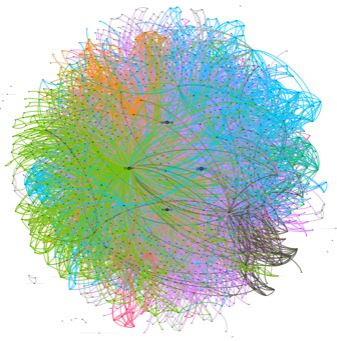Introduction
I had been meaning to read Satya Nadella's Hit Refresh for some time before joining Microsoft myself as an FTE in April 2018. One of the welcoming gifts to new hires was this book, and I decided to read it promptly. I remember being impressed by the thoughtfulness of the author and the attitude that the book advocated, and it made me all the more eager to dive into my new role.While I had intended to write a reflection on the book closer to the time of actually reading it, life happens, and here I am over a year later. However, I have recently looked back over the book, scanning the underlined portions and notes taken in the margin and reflecting on the ideas, thoughts, and vision expressed in its pages.
The book can be divided into two parts. The first recounts and reflects on Satya's professional journey and how Microsoft has and is changing under his leadership. The second focuses on Satya's thoughts on the future of Microsoft and technology. I will take up the first part in this post, and consider the second part in a follow up post.
Note: all personal opinions expressed below are my own and do not represent any official opinions or positions taken by my employer.
Part 1: Chapters 1 - 5
Mission
Since becoming CEO, Satya has made it his job to make the company culture about people. One of the first things he did with the senior leadership team was to have them share with each other about themselves personally. For many, it was the first time they had talked about themselves, "not exclusively about business matters" (6). Work needed to become a personal and meaningful place to be, for "we spend far too much time at work for it not to have deep meaning" (6).How could this meaning be given to work? How could this personal touch be brought to the workplace? Satya believed it could happen by connecting what people were passionate about with what Microsoft was working on, and by making people the focus of what Microsoft was doing. In short, to "employ Microsoft in pursuit of [employee's] personal passions to empower others" (11). Said in a different way, "[o]ur culture needed to be about realizing our personal passions and using Microsoft as a platform to pursue that passion" (94).
I believe Satya would say that this was what Microsoft's mission had been all along, but that mission had been obscured and perhaps forgotten at times. Since Microsoft's "soul is about empowering people" (68) it is important to make that explicit, hence, Microsoft's mission statement was more explicitly stated and promoted: to "empower every person and every organization on the planet to do more and achieve more" (79). Such a clear mission statement unambiguously gave purpose and focus to what the company was doing, and with such a noble goal as empowering others, this mission statement also gave meaning to the work being done.
Leadership: Clarity and Energy
By unambiguously stating Microsoft's mission, Satya demonstrated a key leadership principle: to"bring clarity to those you work with" (119). Without a clear direction or goal, the company could not leverage its resources in a coherent or efficient manner. It would be reactionary, flailing about in response to markets and other companies instead of steadily and diligently driving towards fulfilling its purpose through its products and solutions.
Satya also demonstrated another leadership principle, that of generating energy (119). By defining a noble purpose for the company, Satya gave employees energy, or to use his words, passion, again. If Microsoft's mission was about empowering others, and pursuing one's passions at work was to be the means to fulfilling this mission, how could one not be excited and energized about coming to work?
Culture
While empowering others (i.e., customers) was the mission, Satya needed to create a culture at Microsoft that would support and sustain that vision and actually carry it out. A mission statement that is not lived is just mere verbiage. Any energy generated by that mission statement would fizzle out if not actually carried out. The culture needed to change in order to implement the mission.Satya defines culture as "the values, customs, beliefs, and symbolic practices that men and women live and breathe each day. Culture is made up of acts that become habitual and accrue to something coherent and meaningful" (91). Satya made "renewing our company's culture" his "highest priority" when he became CEO (2). Why? In short, because the company culture is the foundation for everything that the company does, everything that the people in the company do, everything that the people in the company experience. It supports the vision and purpose for the company. It sets the tone and feel of the workplace and the attitudes of those working there.
In a very real sense, culture is the company.
My impression is that Microsoft had been more of a top-down decision, fear-based, and internally-competitive culture prior to Satya's new role as CEO. The company was fragmented along organizational lines, moving in different and often conflicting directions without a clear sense of coherent purpose or mission. It was all about business and performance. It was reactionary.
In the early 2000s, Microsoft was largely on the defensive against the likes of Google, Amazon, and Apple, who were disrupting the technology world and innovating with speed and passion. Microsoft had appeared to stall out, living off past successes and choosing to mimic the products and services of these other companies. There was no sense of vigorous competition. Instead, a spirit of defeat and settling had prevailed. Passions were squashed or left unconnected to one's day to day work experience. Jill Tracie Nichols, Satya's chief of staff, told him days before he became CEO that "[employees] are actually hungry to do more, but things keep getting in their way" (67). Satya needed to allow employees and Microsoft to once again become a place of passion and innovation, a place where Microsoft would not settle for business as usual and would go on the offensive against competing companies. A place with a "sense of purpose and pride in what we do" (71). A place where Microsoft would once again "compete vigorously and with passion in the face of uncertainty and intimidation" (38).
How could this change take place? Here are some key principles that Satya focused on for bringing about the culture change.
Individual and Internal Empowerment
Although Microsoft as a company now had a clear vision for empowering others outside the company, it needed to adopt a culture of empowering employees internally. "The key to the culture change was individual empowerment" (109).
For Satya, leadership is about "bringing out the best in everyone" (40). A leader needs to "bolster the confidence of the people [he or she is] leading" (40). A leader's job is to empower those who follow the leader, but not so much with skills or learning. Instead, the leader provides the inspiring vision and encourages the formation of proper attitudes. But the vision and attitudes must be made one's own if they are to be effective. Quoting Ray Ozzie, Satya agrees that "[t]he one irrefutable truth is that in any large organization, any transformation that is to 'stick' must come from within" (53). Similarly, any transformation of the culture at Microsoft would have to "come from within, from the core. It's the only way to make change sustainable" (57).
We know that this is true for individuals too. External pressures to do things never really work until they are internalized. The motivation has to come from within. The ownership and responsibility has to be with the individual. Otherwise a fear based, micro-managerial, and bureaucratic culture will ultimately prevail. Microsoft's previous culture of top-down and fear based decision making had to be replaced with bottom-up empowerment and freedom.
Servant Leadership and Collaboration
Another major part of the culture change required the use of another leadership principle: "the importance of putting your team first, ahead of your personal statistics and recognition" (39). A company at odds internally with itself, where employees were rewarded based on outcompeting coworkers, could not effectively compete with outside companies. A house divided cannot stand. The success of the company depended on its many parts working together, which required changing the culture to one where employees, teams, and organizations were required to build on the successes of others and to help others succeed. Collaboration towards shared success would be rewarded over "winning" at the expense of others (and ultimately the company).
In fact, Microsoft would make collaboration an intentional business strategy. By "actively seek[ing] diversity and inclusion... our ideas will be better, our products will be better, and our customers will be better served" (101-102). The inclusion of diverse perspectives and the promotion of collaboration would drive better product development as well as better employee work experiences. In short, Satya believed that "we must learn to build on the ideas of others and collaborate across boundaries to bring the best of Microsoft to our customer as one - one Microsoft" (102).
Growth Mindset
A final major attitudinal shift was the promotion of the "growth mindset". Using the principles drawn from Carol Dweck's research in her book Mindset, Satya encouraged a "learn-it-all" culture over a "know-it-all" culture. The fixed mindset assumes that one cannot grow, learn, or change to any significant degree. Decisions coming from this mindset "are ones that reinforce the tendency to continue doing what we've always done" (105). This is often done out of a fear of failure for trying something new or different. Instead, one sticks with what is known to sort-of work.
On the contrary, a growth mindset assumes that one can always learn, grow, change. As Satya applied it to Microsoft, "[w]e need to be willing to lean into uncertainty, to take risks, and to move quickly when we make mistakes, recognizing failure happens along the way to mastery" (111). For the individual, "I must internalize for myself the belief that the sky is the limit. I must work hard - not to climb the ladder, but to do important work" (116).
This mindset can only be adopted in a supportive work environment that embraces failure as a necessary byproduct of experimentation in seeking new and better ways of doing work and in creating new products. With the explicit adoption and promotion of this attitude across the company, leaders and employees could "find a way to deliver success, to make things happen," by trying new things without fear of repercussions when failure would sometimes occur (120). Microsoft would experiment and learn from its mistakes instead of trying to be perfect from the outset (and potentially punishing those that initially failed).
Conclusion
This in summary is how Satya changed Microsoft from a languishing and reactive old-school tech company to a vibrant, innovative, leading, and now cutting edge tech company once again. In short:- He made the company mission and purpose to be employee and customer centric.
- He stated and promoted this mission with clarity and gave employees a purpose that they could be excited about.
- He encouraged, promoted, and rewarded a company culture that would center around individual employee passion and empowerment, servant leadership and collaboration at all levels, and a growth mindset to encourage innovation and experimentation.
Consequently, Satya and his fellow leadership members have provided a blueprint for anyone who wants to change the culture of his or her organization or business, and it appears to be rather straightforward: focus on and serve people (employees and customers). How this is done specifically will differ from organization to organization, but if this is truly the goal that is sought after, I think any organization will make great strides in refreshing itself.
So concludes my thoughts on the first part of this book. Look for a follow up post covering the second half of this book as Satya focuses his attention on the future of technology and its impact on society.





































